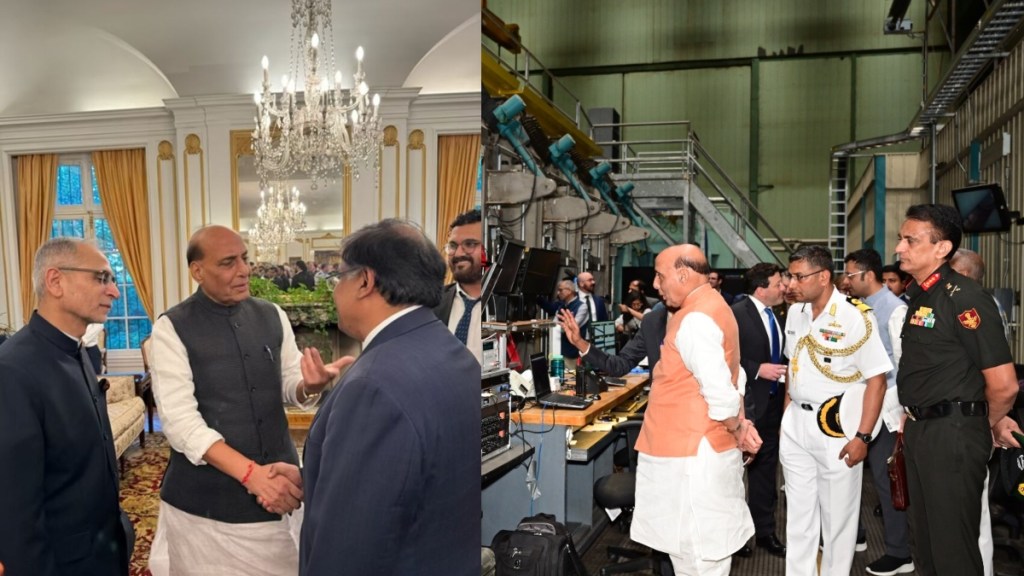India’s Defence Minister Rajnath Singh’s recent visit to the United States marks a significant chapter in the evolving defence partnership between the two nations. Reaching Washington DC on August 22 for a four-day visit, his itinerary included key engagements aimed at bolstering defence cooperation, including a visit to a cutting-edge US Navy testing facility in Memphis, Tennessee, and meetings with American defence industry leaders.
Visiting the US Navy’s Advanced Testing Facility
On Saturday, Singh visited the William B. Morgan Large Cavitation Channel (LCC) at the Naval Surface Warfare Center in Memphis. The LCC is recognized as one of the most advanced high-speed, variable-pressure water tunnel facilities globally. Operational since 1991, it plays a pivotal role in testing large-scale models of ship and submarine designs and full-scale torpedoes in a controlled environment. The facility is critical for the US Navy in measuring submarine and surface ship power, efficiency, and propeller noise, providing valuable data for improving naval technology.
Singh’s visit to the LCC is particularly significant as India is exploring the establishment of a similar facility to enhance the design and development of indigenous naval platforms. The visit provided an opportunity for senior Indian Navy and Defence Research and Development Organisation (DRDO) officials accompanying Singh to engage in discussions with their US counterparts. These discussions are expected to lay the groundwork for India’s efforts to build a comparable testing facility, which would support the country’s broader goals of achieving self-reliance in defence production under the ‘Atmanirbhar Bharat’ initiative.
Strategic Discussions and Industrial Cooperation
Beyond the technical insights gained from the LCC visit, Singh’s US trip was marked by high-level discussions with key American defence officials and industry leaders. In Washington, Singh met with US National Security Advisor Jake Sullivan and Secretary of Defence Lloyd Austin. Their discussions covered a broad spectrum of issues, including the impact of global geopolitical developments, regional security dynamics, and the deepening of defence industrial collaboration, particularly in the Indo-Pacific region.
One of the focal points of these talks include the acquisition of General Atomics’ MQ-9B remotely piloted aircraft systems and the joint production of GE F414 jet engines in India. These deals are seen as crucial for India’s military modernization efforts and its strategic objective of enhancing indigenous defence production capabilities.
Engaging with American Defence Industry Leaders
In addition to his official meetings, Singh also engaged with captains of the American defence industry in Washington. Companies such as General Electric, Boeing, General Atomics, Lockheed Martin, and Raytheon Technologies were represented during these interactions. Singh highlighted the growing opportunities for co-development and co-production in India, emphasising the Indian government’s reforms aimed at making the country an attractive destination for foreign defence manufacturers.
The minister’s message to these industry leaders was clear: India is open for business, and the government’s progressive reforms have created a favourable environment for foreign companies to invest in the Indian defence sector. He encouraged them to partner with Indian companies to accelerate the ‘Make in India’ initiative and contribute to achieving self-reliance in defence manufacturing.
Strengthening the India-US Defence Partnership
The visit underscores the growing strategic alignment between India and the US., particularly in the defence sector. In 2023, the two countries concluded a new roadmap for defence industrial cooperation, aimed at fast-tracking technology collaboration and co-production in critical areas. These include air combat and land mobility systems, intelligence, surveillance, and reconnaissance (ISR) capabilities, munitions, and undersea warfare technologies.
Singh’s visit is also a testament to the progress India has made in transforming its defence landscape. Over the past decade, India has significantly reduced its dependence on defence imports while boosting its military exports. The country’s defence exports reached Rs 6,915 crore during April-June 2024; a 78 percent increase compared to the same period in the previous financial year. The Indian government is on track to achieve an annual defence export target of Rs 50,000 crore by 2028-29, reflecting the success of its policy initiatives and reforms aimed at strengthening indigenous defence manufacturing.

